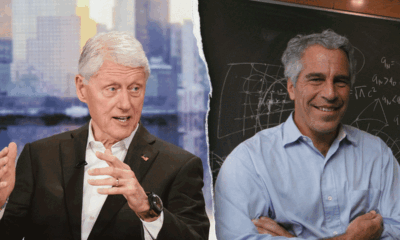INTERNACIONAL
Billionaires boomed in Biden era as Fed became ‘engine of income inequality’ powered by COVID policies: expert

The nation’s wealthiest residents saw their billions grow even larger in the years following the COVID-19 pandemic due to policies from the Federal Reserve that have deepened the chasm of income inequality, economic experts report.
«If you look at the amount of federal regulation, the amount of federal taxes, if anything… the economy has gotten less friendly toward big business, and toward rich people,» economist Peter St. Onge told Fox News Digital in a May phone interview. «What’s actually been happening is that the Fed has been driving income inequality. And, I think for a long time, Republicans were sort of in denial – not just Republicans, but sort of free market types were in denial – and they didn’t want to talk about income equality.»
«I think they should absolutely talk about it, because what’s causing it is not free markets,» he said. «It’s something that I think everybody should oppose, which is government manipulation of the monetary system.»
St. Onge was reacting to data showing that billionaires’ share of the GDP increased from 14.1% in 2020 to 21.1% in 2025, as reported by Johns Hopkins University economic professor Steve Hanke.
JPMorgan Chase’s private bank estimated that the number of billionaires in the U.S. increased from 1,400 in 2021 to nearly 2,000 as of 2024, the Wall Street Journal reported in April.
DOGE SHOULD ‘DEFINITELY’ LOOK AT FEDERAL RESERVE COSTS, ELON MUSK SAYS
President Donald Trump, Federal Reserve Chairman Jerome Powell and former President Joe Biden (Getty Images)
The Federal Reserve is America’s central bank, which sets monetary policies and oversees banks. It acts independently, meaning it does not require approval from the president or Congress when enacting policies.
St. Onge explained to Fox News Digital that «debt is a rich man’s game» and that billionaires have benefited financially since the pandemic as the Fed worked to «manipulate interest rates» down below market value, which subsidized loans.
«During COVID, you could get a mortgage for, you know, three, three and a half percent, when inflation was running higher than that,» he explained. «You were literally being paid to borrow money, which is not a free market outcome.… So it makes loans cheap and the rich overwhelmingly borrow money.»
ELON MUSK WARNS FEDERAL RESERVE MAY FACE DOGE AUDIT
The average debt for the top 5% of Americans sits at about $600,000, he said, while the average debt for the vast majority of Americans is roughly $74,000.
«That’s about a nine times difference,» he said of the data. «So if you make loans too cheap, you are giving nine times more money to rich people.… If you make loans cheap, you’re functionally giving $9 to rich people for every $1 to give everybody else.»
Assets are even more skewed, he explained, with the top 5% of Americans holding $7.8 million in assets compared to the average American’s $62,000 – notching 130 times the difference between the two demographics, he said.
«The value of a stock or even a house are based on the future stream of income, and those are all discounted by the interest rate,» he said. «And so pretty close to mechanically, if you cut interest rates in half – long-term interest rates – you are doubling the value of stocks.»
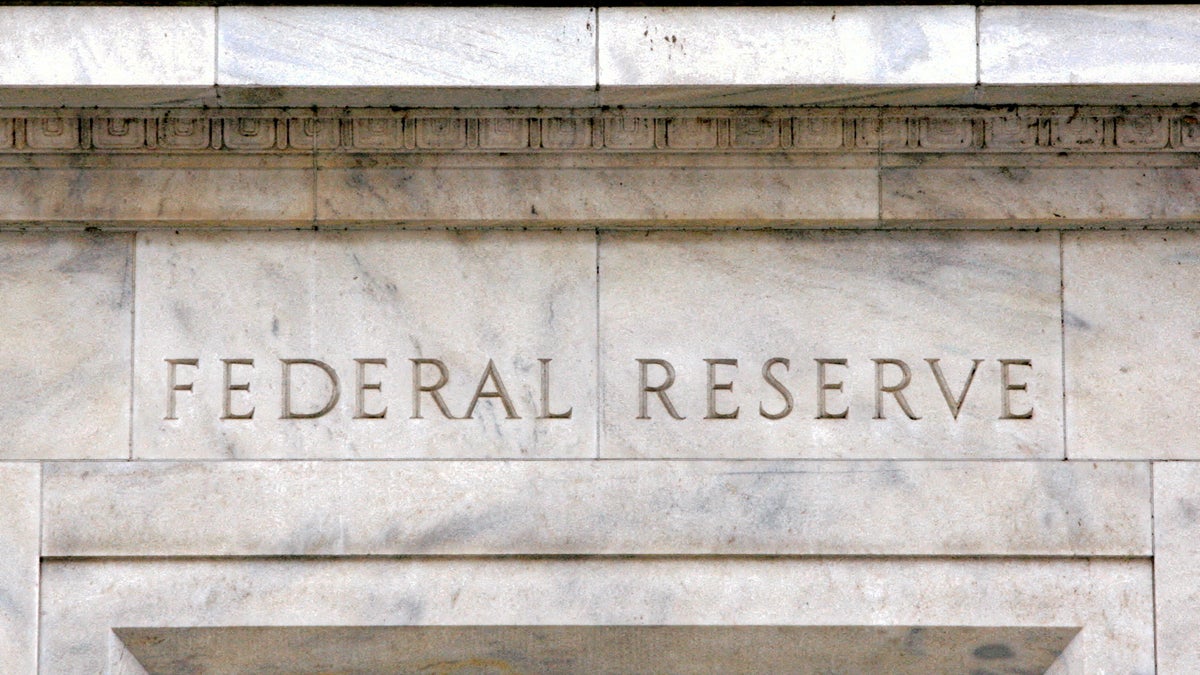
The nation’s wealthiest residents saw their billions grow even larger in the years following the COVID-19 pandemic due to policies from the Federal Reserve that have deepened the chasm of income inequality, economic experts report. (Jason Reed/File Photo/Reuters)
St. Onge pointed to the American economy in the 1970s and the early 2000s, outlining that growth «took a big step down» in the 2000s while asset values, such as housing prices and the stock market, skyrocketed.
«The reason is because, since the 1970s, the Fed has very aggressively held rates low, and so this has caused all those assets to go up. So stocks have gone up, housing has gone up. And again, those are rich men’s games. Overwhelmingly, people who own stocks are rich. Housing is even more skewed.»
«So if you’ve got a nine times difference on loans between the bottom 50% and the top 5%, and then you’ve got 130 times on assets, then the Fed manipulating rates down – they’re not doing it to make rich people rich, hopefully – but that’s sort of the consequence of doing that,» he said. «Holding long-term interest rates low is to shower money on rich people and to shower it in proportion to which they’re rich, right? So the most extreme version of that is going to be billionaires.»
FEDERAL RESERVE HOLDS KEY INTEREST RATE STEADY AMID ECONOMIC UNCERTAINTY
Economist Steve Hanke discussed how the Federal Reserve has fanned the flame of income inequality through its policies at a conference earlier in 2025 at the Mises Institute, an economics-focused think tank based out of Alabama.
«In 2020, billionaires’ share of GDP was 14.1%. Now, it’s 21.1%. The Fed increased the money supply, asset prices went up, & guess who owns the assets? Billionaires. By ignoring the money supply, the Fed is an ENGINE OF INCOME INEQUALITY,» he posted to X in April of his findings.

The Federal Reserve acts independently, meaning it does not require approval from President Donald Trump or Congress when enacting policies. (Alex Brandon/The Associated Press)
«Take the Federal Reserve’s excessive money printing during the pandemic,» Hanke said in an interview published by the think tank in April. «The transmission mechanism of monetary policy roughly dictates that changes in the money supply are followed by changes in asset prices in 1–9 months’ time, changes in real economic activity in 6–18 months’ time, and finally changes in the price level in 12–24 months’ time.»
«Thanks to the Fed’s helicopter money drops beginning with COVID, the annual growth rate of the US broad money supply peaked at 18.1% per year in May 2021,» he added. «Lo and behold, the transmission mechanism followed – the S&P 500 reached a local maximum in December 2021 (6 months later), and inflation peaked at 9.1% per year in July 2022 (14 months later).»
US JOB GROWTH COOLED IN APRIL AMID ECONOMIC UNCERTAINTY
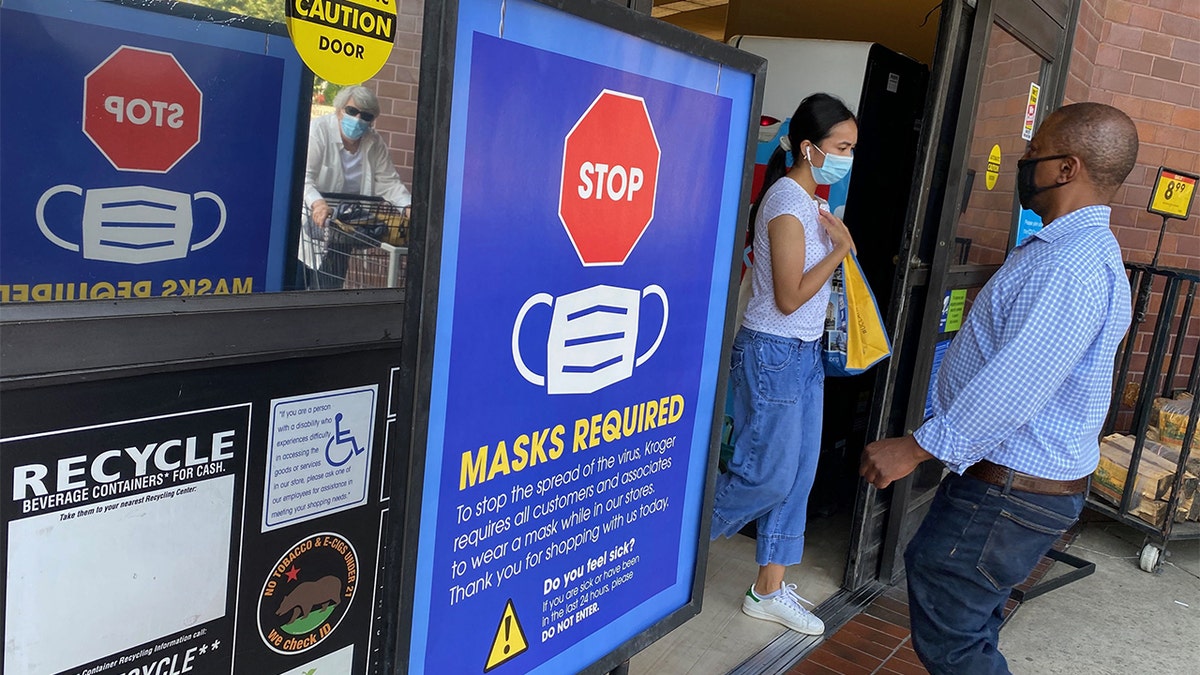
«During COVID, you could get a mortgage for, you know, three, three and a half percent, when inflation was running higher than that,» economist Peter St. Onge noted. (Chris Delmas/AFP via Getty Images)
The result, he said, was skyrocketing wealth inequality to the tune of billionaires increasing their share of the GDP by 7.6 percentage points in just four years.
St. Onge said the Fed’s policies have been political in nature, while remarking he would welcome «naive» Democrats who bang the proverbial campaign drum of income inequality to jump onto the «end the Fed bandwagon.»
«They have a naive argument where they look at rich people and they say, ‘Hey, this is so terrible. We live in this dog-eat-dog jungle of an economy,’» St. Onge said of Democrats who campaign on income inequality. «And that is inaccurate,» he added, citing Federal Reserve policies that have amplified income inequality.
On the opposite side of the political coin, Vice President JD Vance has railed against the Biden administration and «Wall Street barons» for policies he said have hurt the working class. During his acceptance speech after officially becoming the vice presidential nominee in July, Vance said an affordability crisis is strangling the working class, while touting that the Trump administration would end economic «catering to Wall Street.»
CLICK HERE TO GET THE FOX NEWS APP
«Wall Street barons crashed the economy and American builders went out of business,» Vance said from Milwaukee in summer 2024. «As tradesmen scrambled for jobs, houses stopped being built. The lack of good jobs, of course, led to stagnant wages. And then the Democrats flooded this country with millions of illegal aliens. So citizens had to compete – with people who shouldn’t even be here – for precious housing. Joe Biden’s inflation crisis, my friends, is really an affordability crisis.»
The Federal Reserve Board declined comment when approached by Fox Digital regarding St. Onge’s and Hanke’s remarks.
White House,Economic Policy,Economy,Federal Reserve
INTERNACIONAL
Dems say base is ‘rightfully’ angry over their leaders caving to GOP during shutdown fight: ‘Porch puppies’
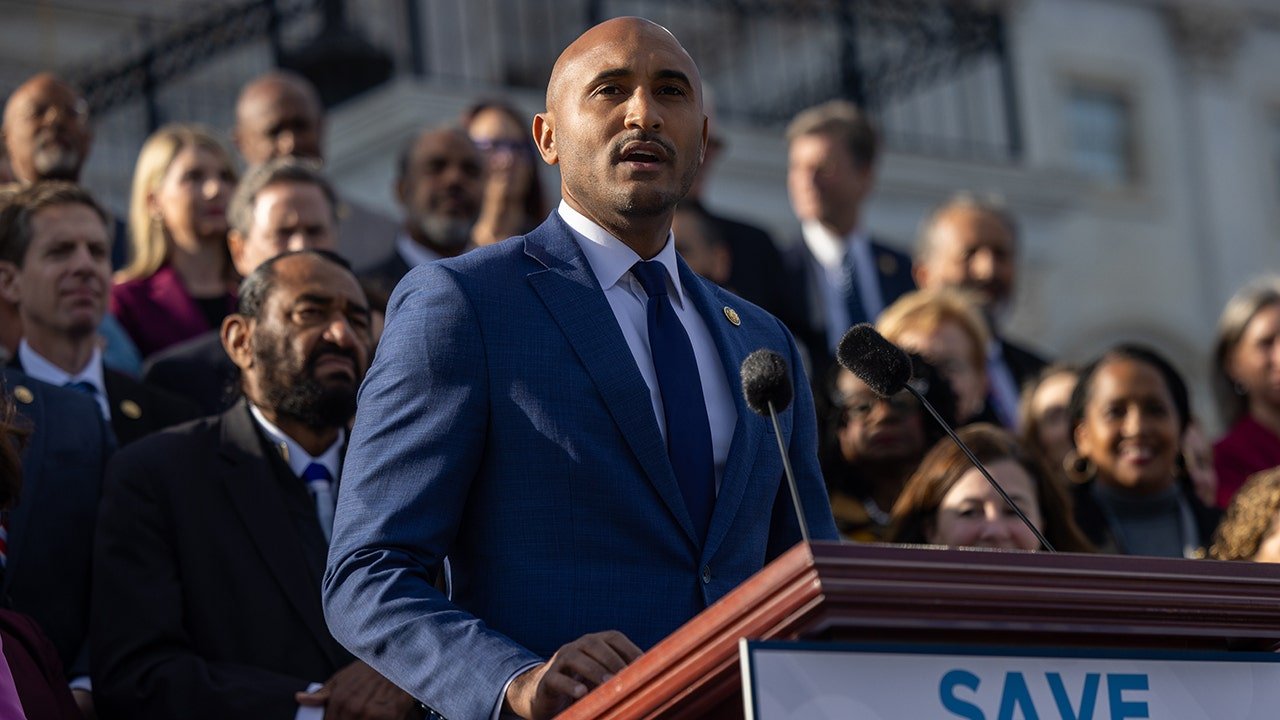
NEWYou can now listen to Fox News articles!
A handful of Democrats defended the far-left portion of their base upset over Democrat Senators caving to Republicans to end the government shutdown.
«I think they are rightfully disappointed. At the end of the day, we took on this fight for more than 40 days to make healthcare more affordable, being one of the primary goals that we had in this fight and to see us give in now at the end of the is something that’s incredibly frustrating, incredibly disappointing for myself included,» Rep. Shomari Figures, D-Ala., told Fox News Digital on the steps of the Capitol after the longest government shutdown that estimates expect to cost the government between $7 billion ad $14 billion.
«We needed to stay fighting,» Rep. Shri Thanedar said. «The stronger our resolve to fight, the more successful we would have been. But it looked like there was always some people in the U.S. Senate that were never on board to continue this fight.»
DEMOCRAT CIVIL WAR ERUPTS AFTER MODERATE ACCUSES PROGRESSIVE OF UNDERMINING ‘FREE AND FAIR ELECTIONS’
Congressman Shomari Figures, D-Ala., speaks at a press conference on healthcare with other members of the House Democratic caucus in front of the U.S. Capitol in Washington, DC on November 12, 2025. (Nathan Posner/Anadolu via Getty Images)
Earlier this week, eight Senate Democrats agreed to give Republicans the votes they needed to pass their budget and reopen the government until the end of January. They provided the support in exchange for a few compromises, notably a promised mid-December vote on whether to extend the Obamacare subsidies that expire at the end of the year.
«We had a moment right now where we needed fighters. We need people to be here and stand up and lay it on the line,» Figures added. «As we say in Alabama, we need big dogs right now. We don’t need porch puppies. If you’re not here for this fight, if you’re not willing to be engaged in this and willing to lay it on the line for people that are counting on us, then you need to reconsider it.»
After the budget finally passed following the longest government shutdown in history that left about 1.4 million federal employees going unpaid, according to the largest labor union representing federal workers, Democrat Rho Khana began fundraising off the anger within the Democratic Party, according to Politico.
DNC STAFFERS RUTHLESSLY MOCKED FOR FUMING OVER REMOTE WORK REVERSAL: ‘GET YOURSELVES TOGETHER’

Protester holds sign in Washington, D.C. to rally against Republican reforms to Medicaid. (Leigh Vogel/Getty Images for Caring Across Generations)
«A lot of people are rightfully concerned about skyrocketing health care costs,» Rep. Sarah Elfreth, D-Md., told Fox News Digital, but noted she «can’t speak for the base» when asked about their anger at Democrat leaders for giving in.
«I can’t speak for the base, I can say that, you know, a lot of people are rightfully concerned about skyrocketing health care costs, in addition to skyrocketing housing costs, grocery costs,» she said. «Anybody getting ready for Thanksgiving right now is seeing that. And we haven’t been able to resolve that. We haven’t gotten the Republicans to even come to the table.»
The House Progressive caucus, in a letter by Rep. Ilhan Omar, D-Minn., condemned the deal Democrats made, arguing it does nothing to stop people’s healthcare premiums from going up, or losing their coverage altogether. Even the Democratic Party’s primary House campaigning arm instructed lawmakers to hold Republicans «accountable» for the shutdown.
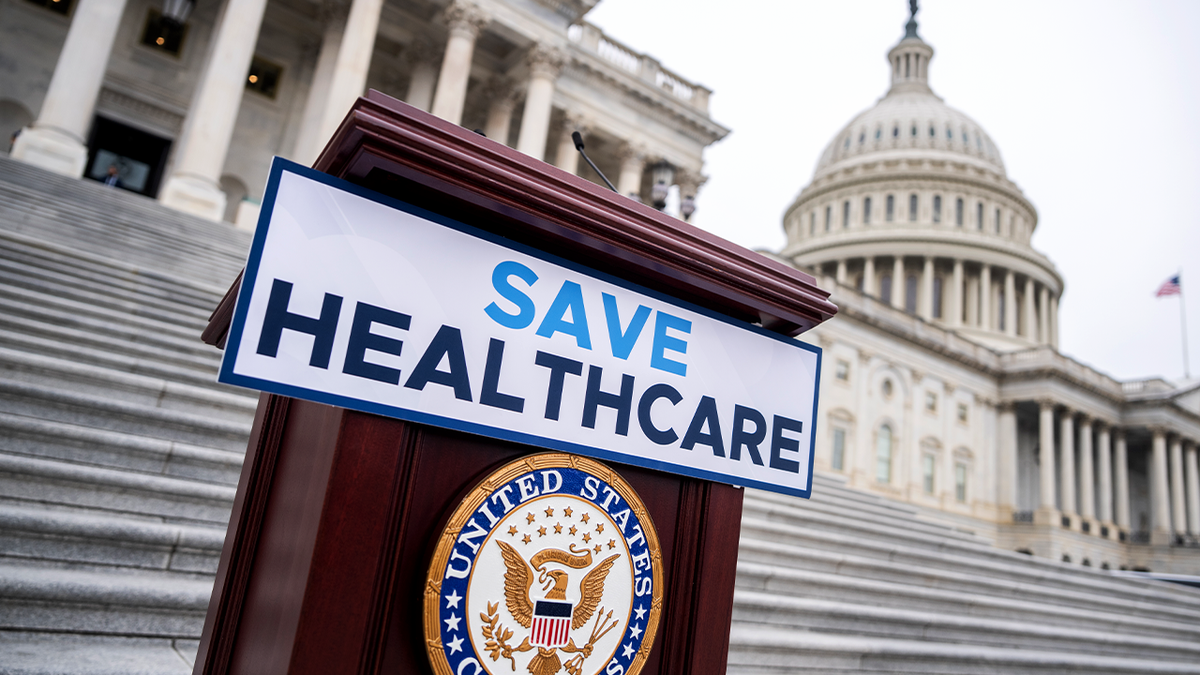
A press conference podium stands on the steps of the capital waiting for lawmakers to discuss healthcare issues. (Tom Williams/CQ-Roll Call, Inc via Getty Images)
CLICK HERE TO DOWNLOAD THE FOX NEWS APP
Meanwhile, the Democrat disarray has not gone unnoticed.
«Now the knives are out for him,» White House Press Secretary Karoline Leavitt told Fox News’ Jesse Waters.
«The Democratic Party is entirely shattered in this ideological battle that they’re having,» noted Josh Holmes, co-host of the «»RUTHLESS» podcast. «I think it continues for quite some time.»
democratic party,government shutdown,congress,democrats senate,politics
INTERNACIONAL
¿Adolf Hitler tenía un micropene y un solo testículo?: las impactantes revelaciones de un documental de Inglaterra
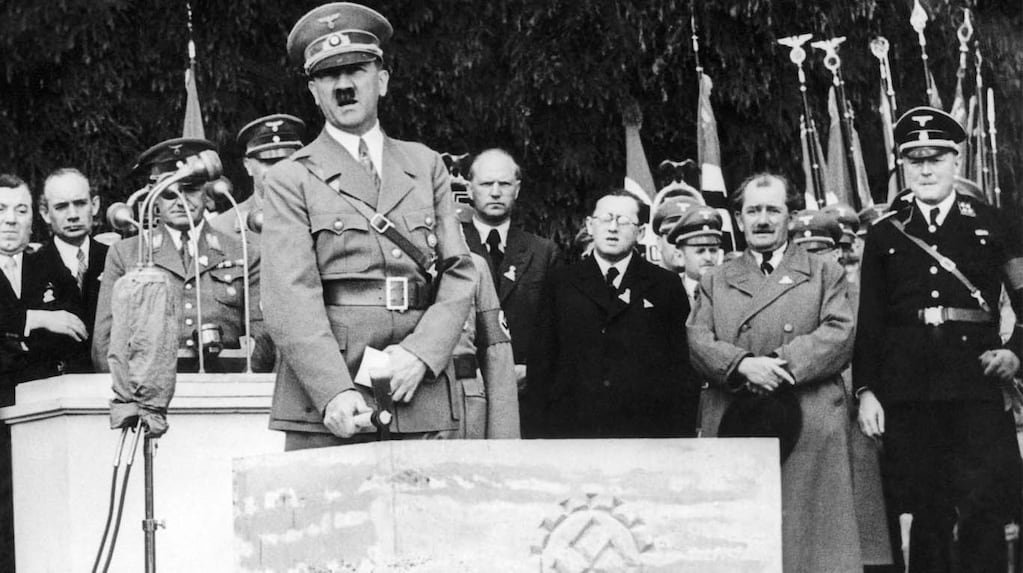
Esta noche, la emisora inglesa Channel 4 emitirá el primero de los dos capítulos del documental Hitler’s DNA: Blueprint of a Dictator. En este punto el lector podrá pensar que se trata de una nueva pieza sobre el nazismo, de esas que se producen decenas al año. Hitler, sus crímenes atroces, el surgimiento y la caída del Tercer Reich, y el universo nazi siguen atrayendo al público, pese a que suele haber pocas revelaciones, pocas novedades en las investigaciones históricas.
Este documental parece destinado a no pasar desapercibido. Está concebido para llamar la atención, para generar polémicas virulentas e irresolubles.
Leé también: Las 3 horas de Hitler en París: un paseo triunfal, una venganza y la orden que no fue obedecida
Según dicen quienes lo vieron y anticipan los principales medios británicos, el trabajo, tras haber realizado análisis genéticos, llegó a la conclusión de que Hitler padecía de Síndrome de Kallman.
La definición técnica del Síndrome de Kallmann según los manuales médicos: una enfermedad genética del desarrollo que se caracteriza por la asociación de un hipogonadismo hipogonadotrófico congénito por déficit de hormona liberadora de gonadotropina y anosmia o hiposmia. La enfermedad afecta el desarrollo normal de la pubertad, provoca su atrasamiento o su detención, y puede generar la atrofia de los órganos sexuales.
Cartel del documental «Hitler’s DNA: Blueprint of a Dictator». (Foto: TVmaze.com.)
Lo que hace que Hitler sea noticia, más de 80 años después de su suicidio, es lo que estos investigadores suponen que sucedió en su cuerpo, lo que el síndrome provocó en su anatomía.
Hitler, afirman, tenía un micropene. Y contaba con un solo testículo porque el derecho lo tenía retirado.
Los más incrédulos y suspicaces se preguntan de dónde fue obtenido el material genético para realizar los estudios y llegar a estas conclusiones sorprendentes y bombásticas. Se sabe que el cuerpo de Hitler no fue hallado; se rescataron apenas unos pocos restos del cráneo y unas piezas dentales. Los encargados de la investigación dicen que la muestra fue sacada de un retazo de tela extraído del sillón del estudio del Führer en el bunker. La tela tenía un gran manchón de sangre proveniente de la cabeza de Hitler tras pegarse el balazo final. De esos restos de sangre provendría el material genético.
Leé también: La vida desconocida de la hermana de Hitler y la crueldad del Führer para impedir su boda con un médico nazi
Los familiares de Hitler que siguen viviendo en Austria, Suiza y Estados Unidos se negaron a que su sangre fuera comparada con la muestra cuando fueron contactados por los productores de la miniserie. Por un lado no quieren tener más nada que ver con su criminal antecesor y por el otro no desean salir del anonimato que gozan.
Aunque todavía no se conocen los fundamentos de la investigación ni tampoco se ha visto el documental, ya son muchos los especialistas que dudan de las conclusiones y del rigor científico del emprendimiento. Según dicen quienes lo vieron y anticipan los principales medios británicos, el trabajo, tras haber realizado análisis genéticos, llegó a la conclusión de que Hitler padecía de Síndrome de Kallman. (Foto: AFP / FRANCE PRESSE VOIR)
La presencia del Síndrome de Kallmann demostraría las dificultades sexuales que Hitler parece haber padecido toda su vida. Este aspecto es avalado por la mayoría de sus mejores biógrafos. Al estudiar su vida amorosa y sexual sus relaciones siempre se mostraron escasas y traumáticas. Una relación con la sobrina que terminó con el suicidio de ésta y la de Eva Braun.
Lo del micropene parece una suposición más que una certeza científica.
Una década atrás se encontró un registro médico de 1923 que consignaba que Hitler tenía un testículo no descendido. En esa ocasión ya se había hablado de que Hitler podía llegar a tener espina bífida oculta y malformaciones en su aparato sexual.
Durante la Segunda Guerra Mundial, la población británica cantaba una canción que decía: “Hitler tiene un solo testículo…”. Hitler’s DNA: Blueprint of a Dictator pretende hacer pasar ese canto popular de bando bélica y de acción de propaganda a dato histórico.
Leé también: El fallido golpe de Estado que catapultó a Adolf Hitler a la fama para someter al mundo a un sufrimiento atroz
Esas conclusiones no cuentan con la certeza científica necesaria. Son especulaciones de documentales de supuestos canales históricos de televisión.
Algunos historiadores sostienen que durante los tiempos de la Primera Guerra Mundial varios compañeros se burlaban del tamaño del pene de Hitler. En este caso, una vez más, las fuentes son imprecisas. Otros testigos afirmaron que cuando iba a una revisión médica era renuente a desnudarse completamente para no que los demás no vieran el escaso tamaño de su pene.
Otros médicos sostienen que más allá de hablar de una predisposición o de un grado de posibilidades, es imposible poder diagnosticar a Hitler con esa poca información y con la distancia de ochenta años. Si esa sangre fuera de Hitler y ese material sirviera todavía (o fuera suficiente) para realizar estudios genéticos, no se podría hacer una afirmación contundente, sino sólo hablar de predisposición.

Si un estudio indica que alguien -en este caso, Hitler- está dentro del percentil del riesgo poligénico, todavía las chances de que haya tenido o padecido esa condición siguen siendo bajas, de menos del 10 %. (Gentileza Agencia EFE)
Un artículo del diario inglés The Guardian destruye las conclusiones científicas del documental consultando a expertos que hablan del riesgo poligénico.
El riesgo poligénico es un índice que marca la posibilidad que se tiene de desarrollar una enfermedad, pero habla de la población y no de cada individuo en particular. Si un estudio indica que alguien -en este caso, Hitler- está dentro del percentil del riesgo poligénico, todavía las chances de que haya tenido o padecido esa condición siguen siendo bajas, de menos del 10 %.
Fueron muchos los que adjudicaron la crueldad de Hitler y su poder inhumano de destrucción con las frustraciones de su infancia, la imposibilidad de ser pintor y los maltratos paternos. Ahora se sumaría un nuevo argumento, una nueva fuente de rabia incontrolable: las anomalías fisonómicas de su miembro viril.
Así, dicen, trataba de mostrar, de reafirmar su hombría, a través de invasiones, conquistas y matanzas. En el campo de batalla y no en la cama. La Segunda Guerra Mundial y la Shoah, si siguiéramos esta línea de pensamiento, se habrían producido por la que Hitler (no) llevaba dentro de su pantalón.
Ir de la biología a la conducta es un paso grande. y muy riesgoso. Y poco preciso. Da pie a la estigmatización. Aunque parezca paradójico al hacer esa operación, los creadores del documental estarían emparentándose con algunas ideas de Hitler sobre el determinismo racial y genético.
Leé también: Mitos y verdades del paso de Hitler por la Patagonia: las nuevas pistas a partir de una foto de 1954
Los médicos aclaran que la gran mayoría de las personas que padecen el síndrome de Kallman no son violentos. Y ninguno inicia una guerra mundial ni quiere hacer desaparecer de la tierra a varios grupos étnicos.
La investigación del documental esgrime otros hallazgos. Dicen que el mito de su ascendencia judía quedaría totalmente descartado. Y que estos análisis también revelan que tenía genes que se vinculan con el espectro autista, la esquizofrenia y hasta el trastorno bipolar. Esos serían nada más que indicios porque es imposible un diagnóstico retrospectivo y totalmente conjetural.
Lo dicho: Hitler y el nazismo siguen generando atención. Y también la ilusión de que fácilmente puede llegarse a nuevos hallazgos reveladores. Las teorías conspirativas y los rumores sin fundamento sobre el nazismo gozan de muy buena salud (es un buen ejemplo que la legión de personas que están convencidas de que Hitler vivió en Argentina crece año a año) se siguen diseminando por una gran variedad de motivos. Uno de los principales es la creciente sospecha, en especial durante las últimas dos décadas, sobre si es posible llegar a una o establecer una verdad. Influye, también, la desconfianza sobre la labor de los expertos o la sobredimensión de su labor siempre y cuando abone la posición que nos favorece o en la elegimos creer: magnificamos los datos que convienen a nuestra postura y desechamos las evidencias que la contradicen o directamente la inhabilitan.
Este tipo de teorías y de revelaciones son una manera de simplificar realidades complejas en un patrón binario y sencillo.
Mientras tanto, durante varias semanas, estaremos hablando del tamaño del pene de Hitler.
Adolf Hitler, Nazismo, micropene, Sumario
INTERNACIONAL
Donald Trump habló de sus planes en Venezuela: “Ya me decidí pero no puedo decirles qué será”

El presidente de Estados Unidos, Donald Trump, afirmó este viernes tener ya una decisión tomada respecto a las posibles acciones militares sobre Venezuela, aunque evitó revelar detalles al ser consultado por periodistas en el avión presidencial, el Air Force One.
“Ya me decidí”, fueron las primeras palabras que emitió el mandatario estadounidense al ser consultado sobre las acciones militares de las Fuerzas Armadas de los Estados Unidos en la región del Mar Caribe frente a Venezuela.
No obstante, añadió que no podía precisar “qué será”, en cuanto a los ejercicios castrenses en el territorio venezolano, tras mantener varias reuniones con altos mandos del Pentágono acerca de los operativos estadounidenses en el Caribe.
Sus declaraciones, registradas en audio durante la caminata hacia el avión presidencial para viajar a Florida, ocurrieron poco después de una información del Washington Post que informó sobre un encuentro entre Trump, el secretario de Guerra Pete Hegseth y otras autoridades, en el que discutieron “una serie de opciones” militares para su estrategia sobre Venezuela.
Según un funcionario citado bajo anonimato por el medio, las fuerzas estadounidenses desplegadas en el Caribe aguardaban órdenes para una posible intervención y estaban preparadas para responder de inmediato.
El funcionario señaló además que Trump mantiene una estrategia deliberada de ambigüedad, evitando revelar los próximos pasos a los adversarios. Mientras tanto, el Comando Sur difundió imágenes de una operación reciente en la que se destruyó una embarcación con cuatro narcotraficantes en el Caribe, quienes, según la publicación en X, resultaron eliminados.
Desde el jueves, la administración estadounidense enmarcó estos movimientos bajo la operación «Lanza del Sur“, cuyo alcance aún no fue detallado oficialmente y que, según Hegseth, apunta a combatir el tráfico de drogas rumbo a Estados Unidos desde la región próxima a Venezuela.
«Lanza del Sur”, una iniciativa bajo la dirección del Comando Sur (SOUTHCOM) y la Fuerza de Tarea Conjunta Lanza del Sur (SOUTHERN SPEAR), fue anunciada por el titular de la cartera de Guerra, quien expresó que “esta misión defiende nuestra patria, expulsa a los narcoterroristas de nuestro hemisferio y protege a nuestra patria de las drogas que están matando a nuestra gente”.
“El hemisferio occidental es la vecindad de Estados Unidos, y la protegeremos”, sentenció en su mensaje a través de la red social X.
Por medio de la misma plataforma, el Comando Sur de las Fuerzas Navales de Estados Unidos informó que el Grupo de Ataque del portaaviones Gerald R. Ford y un bombardero B-52 de la Fuerza Aérea (USAF) realizaron operaciones conjuntas este viernes.
Las maniobras, enmarcadas en una estrategia multidominio, tienen como objetivo respaldar la misión del Comando, ejecutar las operaciones ordenadas por el Departamento de Guerra y cumplir con las prioridades establecidas por Trump. El foco principal es interrumpir el tráfico ilegal de drogas y reforzar la protección de territorio estadounidense.
El USS Gerald R. Ford arribó al Caribe en el marco del despliegue estadounidense dirigido a desarticular redes criminales en la región. Clasificado como el portaaviones más grande del mundo, la nave puede alojar hasta 4.500 tripulantes y operar 70 aviones. La Marina de Estados Unidos la presenta como la “plataforma de combate más capaz, versátil y letal del mundo”.
Con un desplazamiento de hasta 100.000 toneladas, el portaaviones cuenta con sistemas de defensa como los misiles ESSM y el CIWS para protección de corto alcance. El costo de construcción del buque ascendió a aproximadamente 13.000 millones de dólares.

En medio del rearme de las Fuerzas Armadas de Estados Unidos en el mar Caribe, el secretario de Estado estadounidense, Marco Rubio, reiteró que su país desconoce a Nicolás Maduro como presidente de Venezuela y acusó a su régimen de funcionar como una “organización de transbordo” dedicada a facilitar el tráfico de drogas hacia territorio estadounidense.
En respuesta, Maduro acusó a Washington de estar “fabricando” una guerra en su contra. Ante la escalada de tensiones, el régimen venezolano convocó esta semana una movilización masiva de tropas y civiles con el objetivo de prepararse ante la posibilidad de ataques por parte de Estados Unidos.
(Con información de EFE)
Domestic,Politics,North America,Government / Politics

 POLITICA2 días ago
POLITICA2 días agoUna auditoría en el PAMI detectó fraudes y falsificaciones en órdenes médicas

 POLITICA3 días ago
POLITICA3 días agoDe Vido pidió cumplir la pena en su casa y cuestionará ante la ONU su detención

 CHIMENTOS2 días ago
CHIMENTOS2 días ago¡Muy doloroso! Mauro Icardi recibió la peor puñalada de los últimos años de quien menos la esperaba: «Tal vez…»







